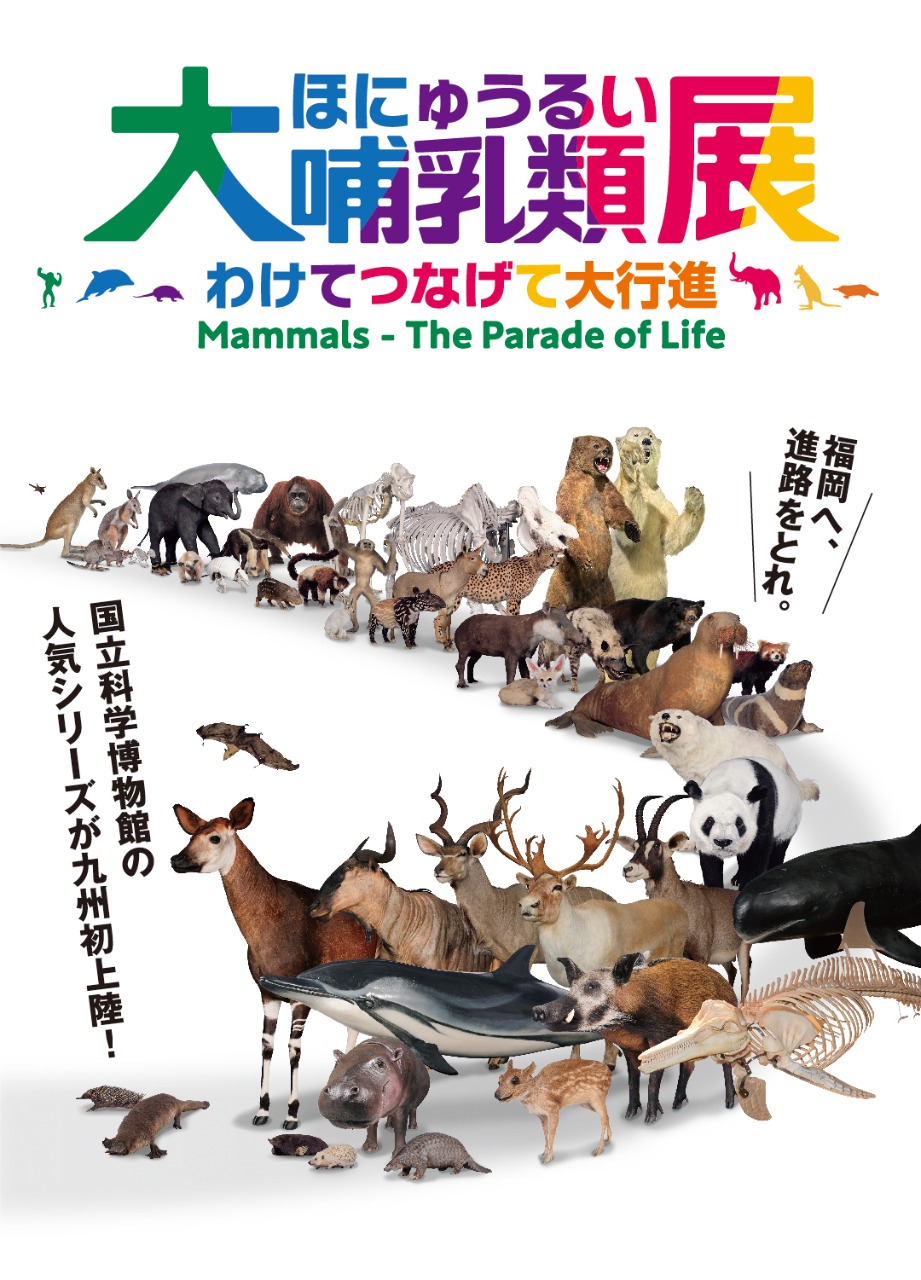
Main Visual
Momochi , Sawara Area | Other(Finished)Mammals – The Parade of Life [The Fukuoka City Museum]
Dates:03 Jul 2024 - 25 Aug 2024
The [Mammals – The Parade of Life] exhibit was held in the National Science Museum located in Tokyo from March to June, and now as part of its tour it is making its way to The Fukuoka City Museum. This popular exhibit has been a mainstay at the National Science Museum since 2010, and is now coming to Fukuoka for the first time. Parts of the large mammal exhibit have been reorganized from their original planning in Tokyo in order to make it easier to understand for first timers.
The themes of this exhibition are “Taxonomy” and “Phylogeny”, which are the cornerstones of biodiversity research. The exhibit features over 6,500 species of mammals that live in a wide variety of different environments, including land dwellers, water dwellers, those that live underground, and even those that can fly. All of these are classified according to how related they are to one another based on their DNA, appearance, and inner workings. In this way the wonder and mystery of biology and the evolutionary process are available for everybody to see.
The main draw of the exhibit is the pride and joy of the original exhibit in the National Science Museum: the ‘parade’ comprised of roughly 200 taxidermy animals. Tigers, pandas, okapis, seals, small flying squirrels and even moles are all on display in this dazzling display of biodiversity. The skeleton of an Asian elephant and a life-size replica of the heart of a blue whale are two of the other main highlights.
Admission Fee
General Admission: 2,000 yen (1,900 yen)
High school and university students: 1,200 yen (1,100 yen)
Elementary and junior high school students: 800 yen (700 yen)
3 years old and preschoolers: 300 yen (200 yen)
*prices listed in parentheses are for advanced purchase only.


